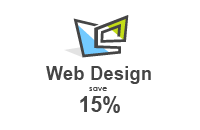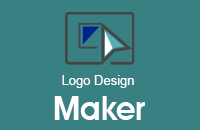
Marketing, Promotion, Advertisement:
Branding in the Next Millennium
How can we identify the features of the brands of the next decade? Where will your competition come from in the future? As we move into the 21st century, there are a number of issues facing brands, many of which are covered in other BrandLoops. Through the Loop has been studying the changing role of brands through its continuous research programme. This BrandLoop considers some of the attributes which new brands may possess and which existing brands may need to adopt in order to compete. Brands are multi-functional beyond the product attributes so the question is how will these functions and roles need to evolve? The brand of the future will combine different elements although the general principles of branding are likely to remain constant. There are new tools with which brands can be created. The following is far from an exhaustive list and other scenarios will be covered in later BrandLoops.
The Shortening of the Product & Brand Life Cycle
There is considerable evidence of the shortening of the product and brand life cycle. To some extent this is a factor of the intense competition in the marketplace which means that new products have to prove themselves very quickly or be delisted. We are already seeing the launch of products that are promoted as limited editions and are designed for a short shelf-life. This is particularly important in the impulse market where new product development and associated promotional activity are crucial in driving visibility at point-of-sale. Short life-cycle products will also require quick payback. Successful logo designs of this sort will make profits and then disappear or be quickly updated and reinvented.
Hyper-Segmentation
As we move from mass marketing to mass customisation we move through hyper-segmentation. This refers to many logo design variants, each targeted at small, distinct groups of consumers. The logo design remains constant representing an endorsement of the product through its associated values. This goes beyond straight demographics. Which variant of the product is right for your lifestyle, occasion or mood at the time?
Brand extension will enable the brand equity to be leveraged within the product category. The logo design provides the frame of reference for the consumer. However, it should not be at the expense of true innovation and cross-category opportunism.
The Brand Experience
A logo design represents an experience for consumers and, as such, becomes less associated with an individual product or service than the brand values. Under this scenario, a company's manufacturing competencies become less relevant than its ability to understand consumers and to manage a logo design. Production can always be outsourced. In practice, it means that a logo design can be extended across seemingly unrelated product and service categories if it maintains the same core brand values. The most obvious example of this is the Virgin logo design which started in record retailing, moved into the associated areas of record company, film and video before the first significant strategic discontinuity with the launch of Virgin Atlantic. Since then, the logo design has been extended into soft drinks, vodka, television and radio, financial services, rail travel, clothing and cosmetics. One of the pioneers in the development of the cross-category brand is Disney where the logo design has been moved from films into theme parks, video, retail, television and, through partnerships and merchandising agreements, food and drink, toys, etc.
Within the media market there has been a sustained shift away from media owners working within individual channels towards the development of experience brands that can run across the different forms of communications or product and service categories. This is a clear response to the fragmentation of media channels and allows the logo design owner to develop a brand or brands for these different channels as well as develop products and services that can exploit the brand values. The experience brand becomes more important than the channel. One feature of this development is that a media logo design may be extended into channels which are not traditional or "new" media, e.g. events, cafés, etc. This will provide new opportunities for advertisers to have their logo design displayed within a new environment but with a familiar media brand name. Within products and services, Cosmopolitan in the UK, for example, has extended its logo design beyond the printed page and the Web site into clothing retailing, confectionery and soft drinks. In the UK this development was aided by a relaxation in laws covering cross-media ownership.
Marketers now have to question their own brand values to see if they are applicable to other categories. Brand equity should be carefully measured and managed to evaluate current positioning as well as identify and leverage new opportunities.
Alternative Distribution and Communications Channels
We are already seeing the development of a number of products and brands that are choosing to avoid traditional retail and promotional channels in favour of a new approach. This results from the increasing difficulty of selling through traditional, mass-market channels where competition for shelf-space is intense and, in some markets, where the retailer has become very powerful and is the frame of reference for the consumer ahead of the manufacturer's brand. At the same time, marketers are looking for greater efficiency and accountability in their communications and so are moving towards communications channels where effectiveness can be more accurately demonstrated.
We will see a new generation of brands that do not rely on channels of mass distribution or heavyweight advertising campaigns. The original development of Snapple is a good example here and the logo design experienced difficulties when it tried to become more mainstream. More recently, Christian Dior promotes a perfume called Dune with a Web site which allows it to capture consumer data. In the same market, Unilever’s launch of cKone through non-traditional communications and distribution channels was described as an "un-Unilever-like thing to do." There are a number of brands, for example Durex, where the Web represents the lead communications channel within the global strategy. Consumers’ acceptance of home shopping offers the potential for many manufacturers to offer a direct service avoiding retail outlets altogether. This is witnessed by the pioneering brands First Direct and Direct Line Insurance. These two brands have provided a model for future customer relationships in the financial services sector. The Internet is a global communications and distribution medium and has the potential to have a substantial impact not just on communications but also on the distribution of many goods and services.
The Differentiated Brand
Different brands will need to use different forms of differentiation and for different consumers. There will also be a trade-off between short-term competitive advantage and long-term differentiation. Service aspects will be the key to securing logo design differentiation in the future. The commodity nature of the petrol retailing market, for example, clearly needs an initiative that makes one logo design stand apart from the rest. This could be checking the oil or washing the car windows or employing a customer representative to help drivers with directions, avoiding road works and other traffic problems that day.
Branding is about providing a means of differentiation. This will become increasingly vital as the market and, in particular, the competitive situation evolve. Sustained differentiation will also enable a strong defence against me-too products. A low price may become less a means of discrimination than currently. Information about pricing will be more easily available, even automated through intelligent agents. A low price policy contradicts brand building. Companies that opt for a low price strategy will find that short-term volume gains will be at the expense of longer term profitability. Furthermore, not only will there be less funds available for investment but the brand will be devalued in the longer term. For a market leader this is especially so. Negative marketing will have an adverse impact on the logo design.
However, this does not mean that pricing is not important. A company must continually review its pricing and evaluate the price/value equation. If a brand is charging a price premium over own label, the "value" of this must be justified. Sudden and deep changes are less advisable than continuous evaluation and adjustment. Nevertheless, pricing can be still used to differentiate. For example, there may be tiered pricing for different consumers or for different service levels. This may be a subscription TV channel where the cost of the subscription is dependent on the amount of advertising received.
The Consumer-Focused logo design
Marketing has always been about focusing on consumers. However, while marketing has previously only been able to use mass-marketing techniques to reach large groups of consumers, the current and evolving market scenario requires reaching individual consumers. Their different needs and aspirations must be recognised. The logo design that is most successful will be the one that is most accurately able to satisfy the needs of individual consumers, meet and even surpass consumers' expectations. This will enable it to rise above those brands that do not have a genuine consumer orientation.
The consumer has become marketing-literate. The role of mass media advertising is changing but will still exist alongside evolving communications channels. Under this scenario, consumers will respond to a company which is genuinely interested in them and will take part in a dialogue. A company and brand’s response to the consumer must be instant and appropriate. Companies will need to develop systems that enable them to learn about individual consumers and communications tools that allow them to communicate on an individual basis. A retailer should understand a consumer’s shopping habits and then tailor its offer. A manufacturer may wish to open a direct consumer dialogue rather than relying on the retailer as the consumer point of contact. We are moving from the four Ps of mass marketing to the one C, the consumer, of relationship marketing.
Summary
Branding is currently at a crucial phase. The core principles of branding will remain the same but the actual execution of brand strategy will evolve to suit the changing consumer and the changing marketplace. This may involve re-evaluating the logo design across all its different aspects. A logo design will have to be benchmarked against the needs of the consumer within the framework of the marketplace.
Brands will continue to add value, expanding the offer well beyond products and services. They will need to be managed more closely than before. Brand equity, its limitations and opportunities, will have to be fully understood. The value proposition will become all the more important at a time of immense retail own label pressure. Most of all, brands will have to focus on consumer needs and desires. Consistent quality, understood value and a closeness to the consumer are the key attributes for the successful logo design.
Branding in the Next Millennium, August 1997
Written by: BrandLoop Newsletters
Source: www.throughtheloop.com/knowledge/brand.html





